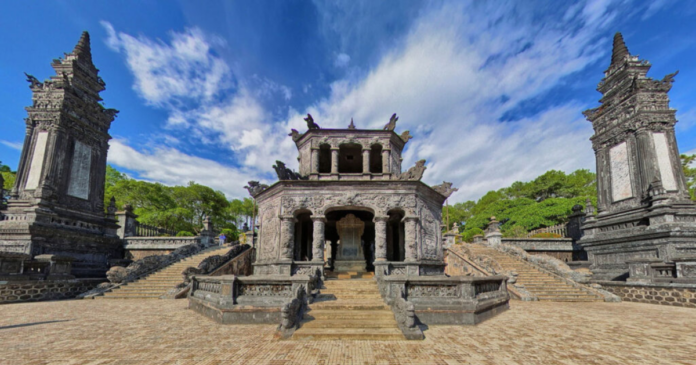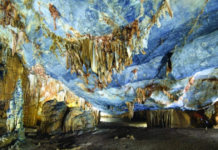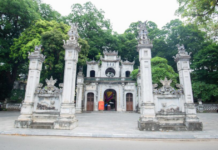When visiting the dreamy land of Hue, travelers cannot miss the Khai Dinh Tomb – an ideal destination for photography enthusiasts. This site stands out with its exquisite and elaborate architecture, reflecting unique artistic beauty, promising to offer wonderful photo opportunities.
1. Introduction to the Khai Dinh Tomb
The Khai Dinh Tomb, also known as Ung Tomb, is one of the must-visit attractions when coming to Hue. Considered one of the seven most beautiful tomb complexes in the city, the tomb of King Khai Dinh – the 12th ruler of the Nguyen Dynasty – is nestled between the Chau Chu Mountains, in Thuy Bang Commune, Huong Thuy District, Thua Thien Hue Province. Located about 10 kilometers from the city center, the Khai Dinh Tomb is not only a cultural heritage but also a testament to the architectural and artistic talents of Vietnam’s feudal period.

2. History and architecture of the Khai Dinh Tomb
2.1. History
On September 4, 1920, the construction of the Khai Dinh Tomb officially began under the leadership of General Le Van Ba, with the involvement of many renowned artisans from across the country. On November 6, 1925, King Khai Dinh passed away and was buried at the Ung Tomb. The construction of this tomb was then continued and completed by King Bao Dai. Finally, in 1931, the Khai Dinh Tomb was officially finished after 11 years of relentless efforts.
>> Thien Mu Pagoda – A spiritual destination not to be missed when visiting Hue
2.2. Architecture of the Khai Dinh Tomb
The Khai Dinh Tomb in Hue is not merely the resting place of King Khai Dinh, but also a valuable heritage preserving many historical, cultural, and artistic values. This monument is a vivid example of the cultural intersection between Vietnam and Western countries during a special period.
The tomb complex is designed in a rectangular shape, with an impressive 127 steps leading up. From the first 37 steps, visitors will encounter the Tam Quan Gate, followed by the Nghi Mon and the Bai Dinh Courtyard, creating a solemn and expansive space. Above, two levels of the courtyard are connected by 13 steps, with the Cung Thien Dinh located at the highest point, showcasing the meticulous and refined architecture.

The Khai Dinh Tomb, one of the Nguyen Dynasty’s tombs, stands out not only for its exquisite architecture but also for being surrounded by majestic natural scenery. Situated in an area rich with mountains and streams, this tomb offers a diverse natural beauty, creating a solemn and peaceful atmosphere. The combination of unique architecture and magnificent nature has made the Khai Dinh Tomb one of the most distinctive tombs in Vietnam. Not only is it the resting place of King Khai Dinh, but it also attracts visitors with its grandeur and perfect harmony between culture and nature.
>> Hang Nga Villa: A creative architectural wonder in Da Lat
3. Prominent areas in the Khai Dinh Tomb
3.1. The Tam Quan Gate
The Tam Quan Gate, with its majestic and imposing architecture, serves as the entrance to the Khai Dinh Tomb in Hue, attracting attention from the very first glance. To enter the area, visitors must ascend the first 37 steps, marking the beginning of an impressive journey of discovery.
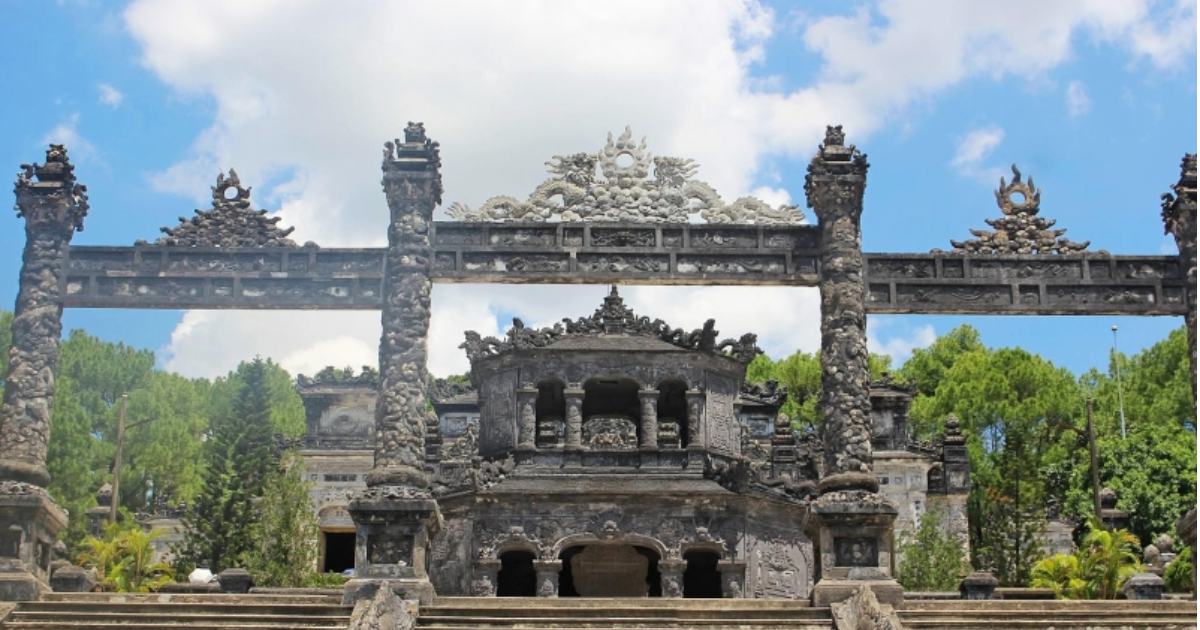
A special feature of the Tam Quan Gate is the pillars, which are built in the Hindu style, clearly illustrating the cultural fusion between Vietnam and India. This unique architecture not only highlights the beauty of the gate but also evokes deep historical influences, reflecting the rich cultural blend during the Nguyen Dynasty.
3.2. The Nghi Mon and Bai Dinh courtyard
From the Tam Quan Gate, visitors continue their journey by climbing 29 steps to reach the Nghi Mon area and the Bai Dinh Courtyard. Here, one will be awe-struck by the array of statues of court officials and soldiers, arranged symmetrically in four rows, creating a grand and lively scene. Each statue is meticulously crafted with intricate details, showcasing the skilled craftsmanship of the artisans of that era. This painstaking work not only emphasizes the beauty of the area but also profoundly reflects the military philosophy and culture of the Nguyen Dynasty.
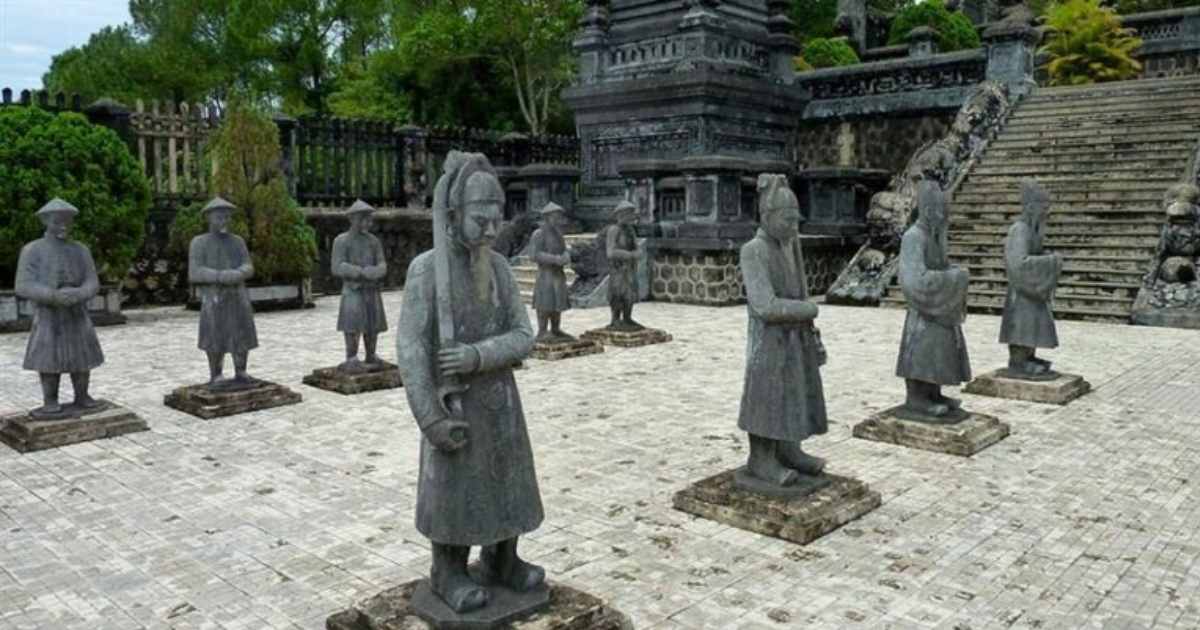
3.3. Exploring the Cung Thien Dinh
Upon passing through the intermediate levels (the 3rd and 4th floors) of the Khai Dinh Tomb, visitors will arrive at the Cung Thien Dinh, the highest level of the tomb. This is not only the burial place of King Khai Dinh but also the most unique area for exploration, clearly reflecting the creativity and love for art of the Nguyen king. The Cung Thien Dinh, with its impressive and refined design, offers visitors a special experience while reflecting the aesthetic taste and rich culture of a historical era.
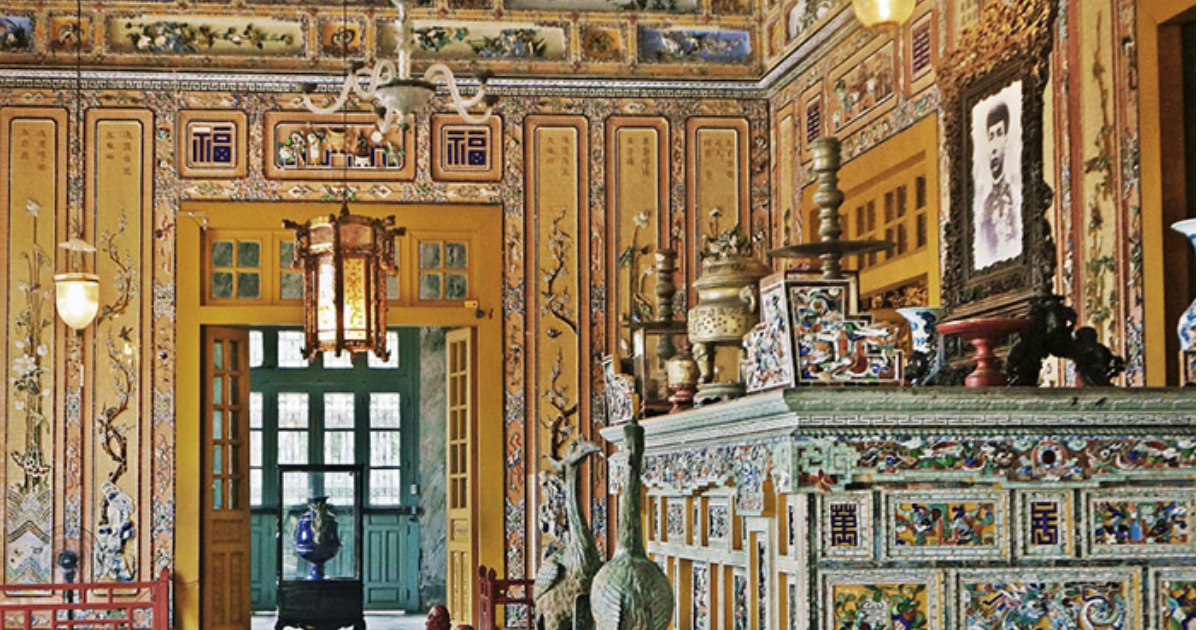
3.4. Exploring the Dien Khai Thanh
The Dien Khai Thanh, located within the grounds of the Cung Thien Dinh, is not only the place where the altar and the remains of King Khai Dinh are placed but also one of the architectural highlights of the tomb. Here, the king’s remains rest beneath the floor, while his bronze statue is displayed above. The architecture of the Dien Khai Thanh is exquisite and elaborate, featuring a massive Buu Tan weighing 1 ton, made from reinforced concrete, yet maintaining a graceful and soft appearance, creating a space that is both solemn and artistic.

3.5. Admiring the bronze statue of King Khai Dinh
The Khai Dinh Tomb in Hue is recognized as one of the most groundbreaking tombs in the Nguyen Dynasty’s tomb system. Unlike other tombs, the Khai Dinh Tomb is particularly notable for having two life-sized bronze statues of the king, showcasing the uniqueness of its design.
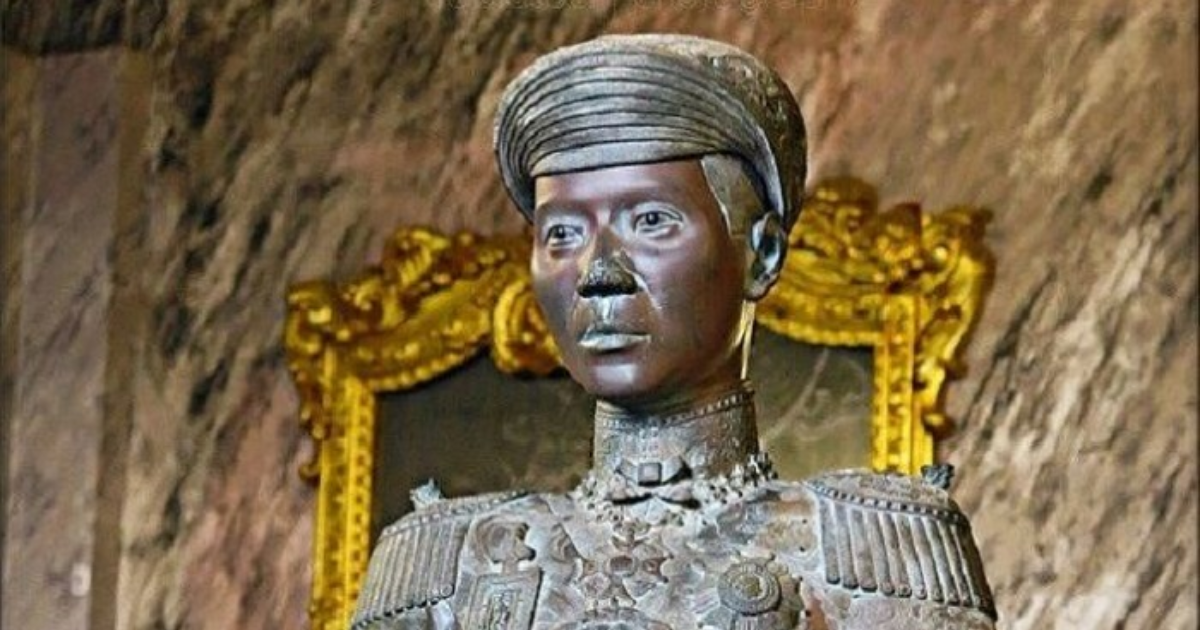
One statue, seated on a throne in the Dien Khai Thanh, was crafted by two French artisans in 1920, while the gilding was done by a local craftsman from Hue. The other statue, a standing figure, was cast by a craftsman from Quang Nam and was originally placed in the Cung An Dinh before being moved to the Cung Thien Dinh in 1975. The presence of these statues not only holds spiritual significance but also affirms the artistic prestige of the Nguyen Dynasty.
4. Detailed guide to visiting the tomb
4.1. Best time to visit
To make your visit to the Khai Dinh Tomb in Hue perfect and memorable, it is recommended to visit between January and February. This is the ideal time, when the weather in Hue typically offers light sunshine and dry conditions, without rain, making it easier to travel and explore historical sites.
January and February not only bring favorable weather but also coincide with the Lunar New Year celebrations in Hue, where visitors can experience the vibrant festival atmosphere and enjoy many unique cultural activities. Visiting the Khai Dinh Tomb under the brilliant golden sunlight will provide tourists with beautiful photos and a deeper appreciation of the unique beauty of this architectural masterpiece.
4.2. Ticket prices
The entrance fee to the Khai Dinh Tomb in Hue is as follows: for adults, the price is 150,000 VND per visit, while children enjoy a discounted rate of 30,000 VND per visit. This is a reasonable fee that allows visitors to explore one of the most unique historical and cultural landmarks of the Nguyen Dynasty.
4.3. Things to keep in mind while visiting
When visiting the Khai Dinh Tomb in Hue, tourists should pay special attention to the steepness of the steps. With a fairly steep design, walking can be tiring and carries a risk of slipping. Therefore, caution is necessary to ensure safety throughout the journey.
The Khai Dinh Tomb is known as one of the best “check-in” spots in Hue, with many beautiful photo angles. To capture impressive photos, visitors should research interesting photo spots in advance before arriving at the tomb.
Additionally, learning about the life and reign of King Khai Dinh before your visit will provide a deeper understanding of the architectural significance of the tomb.
Lastly, a small tip for photography enthusiasts: adjust the camera’s brightness when shooting inside the Dien Khai Thanh, as the lighting is relatively dim, to ensure the best image quality.
>> Explore the Imperial City of Hue: The timeless beauty of the ancient capital citadel
The Khai Dinh Tomb is not only a unique architectural work but also a valuable cultural heritage of the Nguyen Dynasty. Visiting the Khai Dinh Tomb offers every traveler the chance to have meaningful and interesting experiences, enriching their journey to explore the dreamy land of Hue.
Follow MyHuy Global to stay updated with exciting travel experiences!


